The morning spread sunshine across Oslo, and we awoke in comfort in our spiffy hotel.
Located in the Sentrum district of the capital, it put us within walking distance to every sightseeing attraction and cultural landmark.
We loved our bathroom's cascading shower and the plush terrycloth bathrobes and slippers. Slippers are commonly used in homes and hotel rooms because Norwegians remove their shoes when entering. Visitors who venture beyond the entry hallway are expected to remove their shoes. At home, Lewis and I already do that because NYC is one of the dirtiest cities. However, most Americans don't care and wear their shoes and sneakers that spread filth and bacteria in their homes... often onto their furniture, sofas, and beds. Crazy.
Our room was equipped with a Nespresso machine, several capsules, and an electric tea kettle with several teabags produced by Twinings: a preeminent tea maker in England since 1706 that is so excellent that the monarch bestowed a Royal Warrant on the company.
We used the kettle at night, but we preferred to have our first "cuppa" in the hotel's breakfast room. Yes, our hotel booking included a daily breakfast buffet that is worthy of any 4-star hotel. We ate there every morning, and it was great.
Under a pyramidal skylight, the vast room was awash with sunlight. Circular chandeliers hung from five points. Walls were lined with trendy artwork and faux trees with pink blossoms. The room was thoughtfully designed with FIVE entrances, so guests had easy access from each segment of the hotel without bottlenecks of traffic.
Uniformed in white toques, several cooks prepared food, sliced fruit, and replenished. Several hotel staffers kept tables clean after guests left. Nobody was a minority worker; everyone seemed to be a local. That's because—outside of the USA—hospitality workers are not marginalized as low-level and underpaid. Their jobs are considered respectable, and workers are paid livable wages and receive Universal Healthcare from their tax-paid government. Wow, things can truly operate correctly (outside of the USA). As our days progressed at the hotel, they recognized us and gave bright smiles. (On our last day, one young guy was saddened to see us leave). Their level of service made our meals extra-nice: the perfect starts for every day.
Lewis and I prefer a savory breakfast, so Nordic menus are great: sliced meats and pâté, farm-fresh cheeses (from humanely-raised animals grazing on unpolluted Norwegian meadows), non-GMO juices, and non-wheat cereals.
A well-organized counter held jars of teabags, thermoses of hot water, honey, non-bleached sugar, non-GMO milk and cream, pre-warmed cups/saucers, and a futuristic coffee machine. I loved that machine. With the touch of a button, it used one type of beans for coffee and another type for espresso. A dispenser added freshly-grated chocolate. I usually selected lattes, and the machine quietly and smoothly poured steamed milk into my cup, followed by freshly-ground espresso, which was topped by a dollop of additional foam (with perfect bubbles). Using a tiny spoon from a jar of organic cinnamon, I applied the perfect dusting, as a garnish. Splendid!
The buffet formed an L-shape against two walls: scrambled eggs, steamed eggs (perfectly fluffy), skillets of baked eggs, a baking tray of sunny-side-up eggs, and hardboiled eggs that stood in metal egg-holders (an elegant detail).
We also had taught-skinned sausages, crispy bacon, cooked vegetables with cherry tomatoes, roasted potatoes wedges, a tureen of baked beans, and steaming pots of turkey meatballs.
There was always a griddle of fluffy pancakes (not doughy types that take hours to digest). A waffle-iron allowed Norwegians to create their iconic waffles—shaped like lace and topped with jam, Nutella, and whipped cream.
Another buffet had vintage slicing machine that was repurposed as a holder for trays of prosciutto, salami, smoked ham, and pâté. Delicious!
One section was full of Norwegian cheeses. Cows in Norway are fed the least amount of chemical-antibiotics in the world. That keeps their milk pure and unadulterated. We liked Kvitlin (goat cheese), Bla Ost (bleu cheese), Fanaost (cow), and Nokkelost (cow with cumin and caraway). Each wedge was accompanied by an appropriately-designed knife. That was a nice detail.
Chilled in a bed of ice, there were tubs of creamy yogurt, berries, minced fruit salad, cold vegetables, platters of smoked salmon and mackerel, egg salad, and shrimp salad.
Another counter was full of non-dairy milk, dispensers of juices, and individual bottles of mango nectar or ginger/fruit juice. So refreshing.
There were always mini jars of chia pudding. A counter had platters of apples, bananas, pineapples, watermelons, and kiwis. In the middle of the area, we saw tiered baskets loaded with buttery croissants, whole-wheat croissants, and rye rolls. Loaves of mouth-watering bread were arranged, and guests held them with towels and sliced them with bread-knives.
Every morning began with a feast! In American cities, a "full breakfast" usually costs $42.00 per person... and is guaranteed to be smaller than the ones we got for free.
In our opinion, breakfast is the most important meal of the day to fortify you for activities.
Afterwards, we stepped outside and noticed something unusual. Across the street was a historic kiosk, with a copper roof that achieved a verdigris patina. The green structure is iconic in Oslo.
It reminded us of the ones we saw in Copenhagen. In 1893, a postal worker named Johan Narvesen was granted exclusive rights to sell newspapers and travel literature to train travelers. By 1919, he operated 223 kiosks. The one near our hotel was erected in 1914 as a gathering-place for Osloites near the Parliament building.
Now, it dispenses ice cream cones and coffee. The Parliament was our next destination.
We attended a free tour (in English) of the Parliament Building. Seen below, we merely had to cross the greenery of Eidsvolls Plass to get there.
The handsome view hasn't changed much during 100 years.
The queue formed outside the newer half of the building, on a street named Akersgata. Stanchions were on the sidewalk, and a sign confirmed what we saw previously online: 30 people per tour. Thanks to our timeliness, Lewis and I were included in the first group at 10:15. Alas, a young guy suddenly appeared and joined his buddy—who "held a place for him" in the line. That's not fair because it pushed-out someone behind us who would've been the thirtieth attendee. Thankfully, we were in a fair-minded nation. As if the authorities expected that type of "queue cutting", a security guard came and issued everyone numbered cards (1 to 30), which we clipped to our shirts. That prevented anyone else from appearing suddenly to join their friends. The adage is true: "the early bird catches the worm".
Happy to be # 21 and 22, Lewis and I looked around and admired the Victorian-era and Art Nouveau buildings in the area. It looked like the stylistic beauty found in Prague.
*To see our first time in Prague, please use this link:
https://halfwindsorfullthrottle.blogspot.com/2024/04/our-trip-to-prague-czechia-part-1-of-9.html
Precisely on time, we were led into a security screening room. Everyone was obliged to keep their purses and cross-body bags in a locker. The docent kept the key with her during our tour.
We went into a room that was originally a courtyard. It was enclosed, and the King's Staircase was added, as seen below.
Near it hangs a portrait of the King that was completed in 2000 by Tore Juell.
According to the constitution, the King is only allowed inside the building during the annual State Opening of Parliament, when he decrees the goals of the government during his Throne Speech. It is a huge ceremony for the nation!
After the King's Speech, parliamentary work cannot commence until he leaves. Our docent explained, "Even if the King knocked on the door now and asked to come in, I must be obliged to say 'I am sorry, Your Majesty, but you are not allowed to enter'. But he would never do that. His Majesty is a very nice man."
*To learn about a State Opening of Parliament, use this link: https://halfwindsorfullthrottle.blogspot.com/2020/09/the-majesty-of-prinsjesdag.html
Indicative of a reasonably honest society, the biggest "scandal" within the Storting is which minister positioned Lego figures on the model (seen below) in ways that make protests to current policies. If that's their biggest problem, it seems like a well-run government.
Crossing a glass-enclosed corridor, we arrived in a circular library (where employees can borrow novels), which adjoined the Information Technology team. We went upstairs and noticed a mosaic of modern art titled Community. Else Hagen made it in 1959, as a collage stones and tiles that depict people.
Since 1981, the role of Prime Minister was filled by a woman 4 times. Meanwhile, America—which hypocritically pretends to be “Land of Free” & “Land of Equal Opportunity”—hasn’t allowed a woman to become President. Around the world, many nations had female leaders as presidents, prime ministers, and chancellors: China, Israel, Tannu Tuva, Mongolia, Argentina, Austria, Bangladesh, Bolivia, Australia, Barbados, Belgium, Brazil, Burundi, Canada, Chile, Sri Lanka, Costa Rica, Croatia, Denmark, Dominica, Estonia, Ethiopia, Finland, France, Gabon, Georgia, Greece, Guyana, Haiti, Honduras, Hungary, Iceland, India, Indonesia, Ireland, Italy, Jamaica, Kosovo, Kyrgyzstan, Lativa, Liberia, Lithuania, Malawi, Mali, Malta, Marshall Islands, Mauritius, Moldova, Myanmar, Nepal, New Zealand, Nicaragua, Northern Cyprus, Pakistan, Panama, the Philippines, Poland, Portugal, Romania, Rwanda, Samoa, Senegal, Serbia, Singapore, Slovakia, Slovenia, South Korea, Switzerland, Sweden, Taiwan, Tanzania, Thailand, Togo, Trinidad & Tobago, Tunisia, Turkey, Ukraine, Yugoslavia, and the United Kingdom. I suspect that America will continue to ignore other global improvements: better public transportation, renewable energy, Universal Healthcare, more vacation time, and the metric system.
Our tour concluded after an hour, and we had spare time before our gentle stroll to the city's ancient fortress. As a modern metropolis, Oslo is a walkable city with access prioritized for pedestrians. As such, Osloite men have nicely-shaped legs. (Both situations are nice!)
At the nearest intersection, we crossed tram rails in the pavement and sat at a sidewalk cafe. Notice the generous amount of space given to the cafe's outdoor seating, instead of given to cars.
The road only allows for two sets of trams to pass; "people" enjoy the majority of space. We admire European cultures that do that. Please enjoy my quick video of the quaint beauty that our view allowed...
After sipping a pair of tasty espressos (on pre-warmed cups and saucers), we proceeded south.
It was a pristine day for walking around. Inhaling untainted air was a pleasure for us because, last month, we endured the most-polluted air in the world. Canadian wildfires spread ashy smoke over several states in the USA. Dozens of cities were affected, but their air was safely breathable. Only NYC's unchanged urban pollution and (never-reduced) smog trapped the smoke (with ashes and floating soot) to create a "bubble" of toxins and pollutants. It lasted for three days and nights!
During those horrific days, it smothered NYC, and the air looked brown! Here is my photo, taken from my office on Madison Avenue.
As usual, NYC did nothing about it and rarely told workers to stay home. Air filters in our home were ruined, and we replaced them, but most greedy/cheap landlords across NYC and its boroughs refused to change theirs. NYC tried to downplay the severity—so it could still lure tourists—but national weather bureaus proclaimed the air as hazardous for anybody to inhale and the worst quality in the entire world! It was worse than oil-manufacturing cities like Riyadh in Saudi Arabia and Doha in Qatar. It was worse than polluted cities like Baghdad, Delhi, and Dhaka in Bangladesh. Nothing in China was like NYC.
We hiked uphill to the famous fortress. There is no admission fee. It is free to explore, and it is picturesque! It is a mixed-use facility: national landmark, public park, military base, and administrative center. 900 people work at the castle!
A lot of things in Oslo are named with “Aker”. During the Iron Age, the area consisted of farms and paddocks. One of the earliest was named Aker Gård, circa 700 BC, and those were the Norse words for “Field Farm”. Simplicity. Due to its immense size, structures built on it were named for it. As it was divided into smaller parcels, more structures were named for it. When those structures were replaced, the new ones kept the name "Aker" to preserve Norse heritage. Thus, Old Aker Church was built atop the place where Store Aker (Big Field) had its main house. Akershagen (Field Garden) was the area that stretched from where the Parliament building is to the peninsula where the fortress is. During the Middle Ages, the peninsula was acquired by the king to erect the fortress, and it was named for its land. Once that land became royal property, the importance of Aker in Norwegian history increased. (The fortress replaced a Viking fortification). The name of the fortress translates to “Building on Field”: Akershus. Initially, the city's river was named Frysja. In 1636, a Danish bureaucrat relabeled it to honor the fortress… and people liked the name: Akerselva (Aker River).
Built in 1294, Akershus is one of the kingdom’s most-important cultural monuments. Its location makes it easily accessible for people who enjoy meandering through its historic setting to admire seasonal views.
Nowadays, it serves the country for military schooling, cultural activities, concerts, outdoor plays, and government entertaining. The capital’s layout originated from the range of safety provided by the fortress’ ramparts and firepower. Therefore, the historic cityscape and modern street grid owes their existence to this ancient and unwavering structure. Thrusting outward to the fjord, it is ever-present as part of Oslo seaward silhouette.
The facility is managed by the National Fortifications Heritage, which is a division of the Norwegian Defense Estates Agency (created in 2002)...
....and it oversees 13 other fortresses. They are carefully preserved as national heritage sites, yet they are integrated to provide attractive places for modern uses, businesses, and activities.
In 1308, Akershus Fortress withstood and repelled attacks from the Duke of Sodermanland from Sweden. He was the son of a king and his brother became the next king. Ambitiously, he married the infant daughter (and only legitimate heir) of Norway’s king. Norway’s king delayed the wedding to keep peace with Sweden. That prompted the duke’s attack. Four years later, the wedding was granted: the bride was 11-years-old. When she was aged 15, she gave birth to their son. However, the next year, the duke's brother tricked him at a banquet and imprisoned him forever.
In 1449, the fortress resisted an invasion by the King of Sweden: Karl Knutsson. Yet, King Karl defeated the rest of the nation and crowned himself King of Norway… for one year. After Christmas, he tried to conquer Akershus Fortress again, but he failed. During the summer of 1450, his supporters abandoned him, and the Norwegian crown was taken by King Christian I of Denmark. In the 1550s, it became a royal residence for King Christian IV and was refurbished as a Renaissance palace. It was always a defensive fortress. In 1907, a railroad route was built against the fortress walls, going from the port to the city-center. It was dismantled in 1983 to facilitate traffic, as seen below.
We entered the military compound by walking along row-houses that are barracks.
A modern playground was situated in the courtyard.
We breached the fortifications at Skarpenord's Bastion, which stood within the fortress since 1592.
The Powder Magazine is there. Built of stone in 1657, the word "magazine" meant storehouse (of gun powder).
The original gate remains, but visitors use a newer one from 1834. The Royal Cypher of King Fredrik III is emblazoned there from that year.
The sandstone walls are steeply angled, which was evocative of the fortress that we explored in Nagoya, Japan.
*To see that fun adventure, please use this link:
https://halfwindsorfullthrottle.blogspot.com/2016/11/our-trip-to-japan-2-of-6.html
We looked inside the half-timbered Visitor Center, known as "the long red house". Constructed of wood in 1774, it was initially the Artillery Building. It had an exhibit about films using ancient Norwegian royalty, and it was free of charge.
We walked up along the Great Rampart, which was commenced in 1567 and thwarted two sieges!
Medieval ornamentation from demolished Catholic churches are visible as part of the wall, as seen in my photo below.
From a vantage point atop a grassy hill, people gathered to see the Execution Site where invading Nazis killed 42 Norwegians in 1945. They were members of the Norwegian Resistance who assassinated the Nazi Police-General. In 1949, King Haakon VII unveiled a memorial to those royal subjects who gave their lives to restore the kingdom.
A picturesque half-timbered building contains the Norwegian Resistance Museum. Constructed in 1691 as a double-battery for guns, it was converted into a train depot when the railroad had access to the fortress.
We continued inward, through the next gate, which was added in the 1780s.
Coming over the crest of another hill, we faced the towering Banquet Hall, as part of the castle's north wing.
It was begun in 1300. Despite its purpose, it has thick gray stone walls to repel attacks. There are no openings, except the door and its drawbridge. (The moat is dry now). In the 1500s, it had archery slits and cannon embrasures. Amazingly, that section has the oldest foundations from when the fortress was first erected in 1294! They were built directly on bedrock, to make it impossible to dig tunnels under it. Since the north wing faced inland, it had a high wall to foil attackers who used siege towers.
We climbed stone steps to enjoy the vantage point from the North Curtain Wall that overlooked the sprawling city. Laid in the Middle Ages, the long wall is 8 meters (24-feet) high and 3 meters (12-feet) thick!
It is alongside Knuts Tower, which was built in 1300 to provide crossfire. During battle, it was armed with huge crossbows. It was named for a knight, Sir Knut Alvsson, who was slain in 1502 and left in the tower. In 1641, a horses-powered mill was installed, to pulverize grain for bread.
We joined backpackers and bicyclists who paused to appreciate the view.
Below us, a huge naval frigate was moored against the fortress' Romerike Bastion, which was built for the Calmar War of 1611.
The vessel is part of the fleet that belongs to the Royal Norwegian Navy.
Despite its large size, the ship was dwarfed by the fortress. The names of all naval vessels are given the prefix of HNoMS, which translates to His Norwegian Majesty's Ship. In 1509, the Danish-Norwegian fleet was established, yet most sailors were from Norway. In 1814, Norway’s Royal Navy was restructured as its own.
Continuing onward, Lewis and I crossed the antique drawbridge and explored the the castle's rectangular courtyard. It is sandwiched by two square towers with pointy roofs.
The castle portion of the fortress was commenced at the end of the 1200s by King Håkon V, the great Norwegian castle-builder, as his royal residence. By royal decree, he erected frontier fortresses in the vast perimeter of his realm, and two are now within the modern borders of Sweden.
The sunshine highlighted the various stages of construction that the fortress endured, due to battle damage, rebuilding, fires from lighting, and refurbishments. Gray stones from the Middle Ages are at the bottom, sitting on bedrock of the peninsula. Medieval bricks are above them. In the 1600s, thousands of redbricks were added by King Christian IV.
Lewis posed at the gold-embossed doors of the Chancery Wing on the seaward side.
The Chancery features three eras of construction: excavated stones from the Early Middle Ages, medieval bricks, and 17th-century tiles.
Paying a nominal fee grants visitors access to the interior of the castle. On four levels, its four rooms are used by charities and government agencies for celebrations: Journeyman's Cellar, Castle Hall, Ladies' Hall, and Royal Hall. In 1592, the medieval decor was slowly renovated into a Renaissance style.
Underneath the castle, a crypt holds the Royal Mausoleum. Sarcophagi contain the mortal remains of King Haakon VII and Queen Maud, as well as King Olav V and Crown Princess Martha (she died before her husband was crowned). The oldest bodies belong to King Sigurd (died 1130), King Haakon V (1319), Queen Euphemia (1312). Most other royal burial sites before 1380 disappeared due to a lack of preserved information. One day, they might be unearthed, just as the body of King Richard III was rediscovered under a parking lot in England.
We descended a cobblestone road that hugged the edge of the fortress. Two gateways were strategically placed nearby to trap invaders who might breach the first wall. Being stranded against the second gate, they were easily killed by defenders.
We noticed that the middle rows of cobblestones are angled abruptly. That was done purposely to give traction to horses that pulled heavy supplies up the incline. Behind the circular window, the Royal Kitchen busily conjured feasts—regardless of battle or peacetime—since 1633.
Lewis and I walked along the west wing of the fortress, which preserved its firing-slits that were inserted in the walls in 1770 for riflemen.
Lewis posed with a trio of cannons that were forged and assembled in Denmark in 1766. They still have gouges as battle-scars.
They are capable of propelling a cannonball (weighing six kilograms) for an astonishing distance of 850 meters! During their heyday, nine of those cannons defended the fortress.
Behind the line of cannons, the south wing looked stately and sure-footed in all its glory of unique architecture. Enduring the centuries since the 1300s, the South Wing included the fortress’ main entrance. King Christian IV installed opulent apartments for himself and the queen. The top level has a large room named Christian IV’s Hall, which was a reception room; it is regularly used for gala occasions.
In the foreground, the medieval-era stables occupied the red-tiled building. Long-gone are the brewery, slaughter house, and bakery. The little structure covers an ancient well that was cut into the rock to supply the fortress with fresh water.
At the edge of the rampart, Munk's Tower was named for a Danish nobleman, Christiern Munk, who was Governor of the Fortress in 1556. Each level has five gun slits for cannons. In 1628, its roof was removed to provide an open platform that allowed gunners to aim faster at enemies. But, the army rethought that tactic and replaced the roof in 1691... and added a pinnacle with flagpole. Since it was a sturdy stronghold, the tower safeguarded the Royal Regalia and Crown Jewels in the 1800s.
Local folklore claims that a long-forgotten secret passage connects Munk's Tower to Hovedoya Island. Local legends insist that the tower is haunted! Allegedly, a headless apparition wanders it at night from a centuries-old beheading. Other ghost-stories in the main parts of the fortress involve employees, soldiers, and visitors hearing paranormal footsteps from places where the floors are long-gone, as well as disembodied voices in places were old structures once stood. Spooky!
We walked through another fortified gate from the 1550s. A grassy field abuts Prince Carl's Bastion, which was created in 1616 when the earlier walls were increased in height. Seen below, I posed on a park bench under a fragrant apple tree.
20-pound howitzers are aligned on the bastion, intended to shoot over the wall at ships in the bay. Presently, artillery field-guns from 1901 are fired annually for military salutes and royal celebrations.
Formerly a royal residence, the fortress honors its modern royalty with a "double 21-gun salute" during the birthdays of the King, Queen, Crown Prince, and Crown Princess. They are also fired for royal weddings and funerals, as well as Liberation Day (from WWII), Constitution Day, and on June 7 for the Dissolution of the Union with Sweden in 1905.
Each cannon crew is manned by personnel from the Home Guard.
Looking up, we saw The Virgin's Tower, circa 1299. We are unsure how it got its nickname. It is still equipped with its portcullis and gates.
They seem high because there was a bridge that spanned the moat, which is now gone. The gate was sealed in the 16th-century, and the only remnant of the moat is a small pond named Monastic Pond.
To the left of the public lavatory, we saw a C-shaped structure that had been a barracks in the 1580s, equipped with a bathhouse, riding arena, and deer enclosure.
The current facade was achieved in 1778. While American patriots fled from British redcoats and German-Hessian troops during their Revolutionary War, Norwegian soldiers made a home in this fine building. Famously during the Peasant Rebellion, Christian Lofhus was incarcerated there for ten years until he died in 1797. Since 1947, it is used as military offices.
Lewis and I entered the public lavatories and noticed unusual signs about personal hygiene. Apparently, it is indecent to urinate into the toilet (to avoid wayward drips), but the image on the right implies multiple scenarios where it is okay to either urinate in the sink, masturbate in the sink, or clean your penis in the sink.
We're not sure, but it was amusing!
Afterwards, we eyed the Drawbridge & Winch, which stands from 1653! In 1920, the moat was filled so King's Street could be paved.
Ahead of us was the fortress' prison.
By royal decree in 1652, King Frederick III established Akershus National Penitentiary at the fortress, so that criminals experienced “moral edification” via hard work. The convicted laborers were assigned to civic tasks and public works throughout the capital. (*Trivia: Prince George's County in Maryland is named for the king's son). By 1842, 530 male prisoners lived there. Famously in 1839, “master thief” Ole Hiland escaped by digging a tunnel under the wooden floor. He was Norway's version of Robin Hood, and he robbed the Bank of Norway in 1835. He's notorious for escaping from jail 11 times! In 1842, he was apprehended and returned to Akershus. Alas, he "committed suicide" in his cell in 1848.
We followed a curvy cobblestone street and admired blue-painted row-buildings. Their historic wooden doors have a "pointy" pattern. They are now offices.
In 1592, a large pond was divided so a defensive wall could be erected. The outer part served as a moat, and the inner one was named Carp Pond. Nowadays, an open-air theatre straddles the pond for annual performances.
On that day, crews prepared for a pop concert. Lewis ventured closer to admire the koi fish in the pond. I worried that someone might reprimand us for being there, but the carefree Norwegians merely smiled and left us alone. Other Osloites were already there, using the empty bleachers to read books or chat. Nobody seemed concerned that the concert area was being used like a public park... and that is very different than in NYC. We didn't stay for the concert, but we're certain that it was popular.
*To see when we visited the luxurious castle that King Christian IV built in Denmark, please use this link: https://halfwindsorfullthrottle.blogspot.com/2019/04/our-trip-to-copenhagen-part-8-of-9.html
Also located at the fortress is the headquarters for the Royal Norwegian Ministry of Defense, which was formed 208 years ago. The Chief of Defense and his staff has offices there, too. After the King, he is the highest-ranking officer of the Norwegian Armed Forces, and he also supervises the Norwegian Intelligence Service.
Nearby is the headquarters of the Special Forces Operations Command, as is the administration office of the kingdom's Defense University. The Institute for Defense Studies is also at the fortress.
If you exit the fortress from King's Gate and go to the southern end of King's Street, you will discover the Norwegian Armed Forces Museum.
We planned our day to begin at the fortress in anticipation of watching the royal guards march from it to the royal palace for the daily Changing of the Guard ceremony that occurs at 13:30 (1:30pm). Supposedly, they get into formation in a courtyard at the fortress at 13:00, but we didn't see anything happening. Other tourists waited, too.
When we realized that there was no parade, we simply went to the palace and joined throngs of spectators.
Here is some background info. The first Norwegian defense group existed in the 900s: the Leidangen. Since the Viking Age, kings had their own elite royal guards, named the hird. The Royal Norwegian Company of Marksmen was founded in 1856 by Norway’s monarch of that era: King Oscar I of Sweden. A decade later, the name was changed to His Majesty the King’s Guard (Hans Majestet Kongen Garde). The King's Guard is composed of a battalion from the Norwegian Army.
All troops of in any branch of the Norwegian Armed Forces swear an oath of allegiance to the King.
Formed in 1628, the Army of Norway hired Prussian soldiers and officers to train them. (Consequently, the official language of the Army Command was German until 1772). Their excellent training was hugely beneficial when Sweden invaded in 1700 but was defeated. Norway’s newfound strength ensured a century of peace.
Those foot-guards provide sentries for the palace 24-hours per day, 365 days of the year… and they did that since 1888!
They also perform sentry duty at the fortress, Huseby Military Camp, and the Royal Manor & Farm. The continuity of their duty is a reassuring rhythm in the city. In addition to being royal bodyguards, they are the prime infantry unit to defend the capital (with backup from the Royal Norwegian Air Force). The troops are garrisoned in an outer borough.
They are instantly recognizable by their unique uniforms.
During Norway’s Nazi Occupation, German troops who fought them nicknamed them “black devils” because of their fierceness and uniforms. To this day, military uniforms are referred to as “the King’s clothes” because the troops serve him, and he is their chief. For Royal Guards, the uniform includes bowler hats with black plumes (inspired from fashionable Italian troops of the 1800s), green epaulettes, tunics with red piping and white stripes down their pants, and silver buttons.
We think those uniforms are snazzy! From our interest in things around the world, we saw astounding military uniforms...
...so Norway's are not as unusual as others.
The King's Guards are renown for physical training, marksmanship, and showmanship. Yes, they display a creative choreography during ceremonies: chucking rifles overhead, twirling their weapons between hands, maneuvering their drumsticks and musical instruments in “waves”, and whimsical marching patterns that resemble homages to dance.
They form parades for foreign dignitaries, and they line the processional route for the State Opening of Parliament. They also create a Guard of Honor at palace banquets, and they maintain a security cordon at garden parties.
In London, Windsor, and Copenhagen, every day involves a parade of guards from their barracks to the royal palaces. That happens less frequently in Oslo. We didn't know that before we arrived. Lewis and I were dismayed by Oslo's tourism advertisements that promoted it... but failed to fully mention that the parades are infrequent. In fact, when we questioned the staff at the fortress' Visitor Center, they didn't know the dates of the parades! (Later a Front Desk worker at our hotel researched the information online... and admitted that it isn't readily available in English. The guards only had parades three times in July, and one was planned for the end of August). Mostly, the ceremony simply occurs at the palace as the guards change shifts.
When the guards find the time for a parade, a military band accompanies them.
Departing from the fortress, they usually use Kongens Gate (King’s Street) onto Kirkegata (Church Street). It’s different from the Changing of the Guard that we witnessed in London. There, the guardsmen marched a short distance on a vehicular road that is surrounded by parkland. In Oslo, the guards march through city streets—passing offices, shops, and restaurants. They are in the midst of their citizens: pedestrians, cyclists, drivers, trams, and traffic-light intersections. Watching them go by with music provides a pleasant pause in a busy day for many people.
Construction workers, sanitation workers, postal workers, police constables, food delivery bikers, tourists, office workers, retail customers, and shopkeepers can admire their splendor... when they have parades.
Lewis and I headed to the palace. We crossed the tram tracks in Prince’s Street and proceeded up to Karl Johan’s Street. The spire of Oslo Cathedral loomed in the skyline. Day-drinkers were busy at Sir Winston’s Public House. At a Metro station, travelers heading to their trains paused to admire the upbeat music from a street performer. Soon, the stately Parliament House came into view. We passed the lobby of the Grand Hotel. Crossing to the next street, we passed our gorgeous hotel and waved at the employee assisting a Chinese family into a taxi.
Next, we passed the oldest part of Oslo University from 1811. It was initially named Royal Frederick University because it was established by royal decree from King Frederick VI of Denmark & Norway.
Those classic buildings were inspired by creations in Berlin (when it was the capital of Prussia) by a Prussian architect named Karl Friedrich Schinkel in the 1810s.
In Norway, college educations are free to everyone, and most institutions are funded by taxes. The kingdom believes that a higher-education is a human right, so it is tuition-free. (In America, it is a profit-guzzling scheme that puts graduates under $100,000+ of debt and forces them to buy textbooks each year that have a price mark-up of 1,000%!) Norway's system is similar to Denmark's. Life/Work Balance.
As we went uphill, we realized that many embassies surround the palace. They are not near the parliament; they are near the monarch: Estonia, India, Chile, Israel, Italy, Colombia, Canada, and Switzerland. After walking through an allée of trees, we joined other spectators who savored the sunny day to watch the guards.
Fluttering from its flagpole, the royal standard of Norway was created between 1280 and 1318. It indicates that the King and Queen are inside. Bystanders were already gawking at the guards.
Without instructions, everyone formed a line facing the palace. Just then, a squad of guards exited from the yellow Guard House and stood "at attention"... for a long time.
An unseen and unheard signal deployed three guardsmen into the forecourt to keep the crowd beyond a certain area. The guard closest to us caught my eye, and I bobbed my head in silent recognition of his service.
Punctually, the new regiment of guards appeared at 1:30pm. There was no music. Silently, they marched counterclockwise around the palace and made a showy procession in front of the onlookers.
Their white gloves and shiny swords gleamed in the sunshine. Amidst incomprehensible shouts, the performed drill exercises and had their uniforms inspected by the Captain of the Guard.
The changing of the guards occurred, as they marched to each Guard Hut and swapped positions.
The outgoing soldiers went off-duty.
*To see when we entered a fortress in Copenhagen and watched a Changing of the Guard procession, please use this link:
https://halfwindsorfullthrottle.blogspot.com/2019/04/our-trip-to-copenhagen-part-3.html
*To see when we witnessed the Changing of the Guard at the gargantuan Prague Castle in Czechia, please use this link:
https://halfwindsorfullthrottle.blogspot.com/2024/04/our-trip-to-prague-czechia-part-2-of-9.html
After all of that sightseeing, we wanted an outdoor lunch. We chose a wondrous place: a cliffside restaurant overlooking the city that is nestled in the woods.
The most efficient way to arrive is by tram. We love using trams. Oslo has a network of tramways that it successfully sustained since 1875. In 1894, Oslo had the first electrified tram system in Scandinavia. The trams and Metro are operated by a municipal agency named Sporveien. Seen below, its logo of interlocking arrows reminded us of the railway logos that we saw in England and the Netherlands.
72 trams operate on six routes with 99 stops, and the system stretches to many suburbs and outer districts. It's amazing.
The system is named Trikken, which is an abbreviation of the Norwegian word for “electric”. Trams retained their blue livery (paintjob) since 1894. Too many European cities succumbed to America’s “carpetbagger” fast-talking salesmanship to dismantle their efficient trams and become dependent on (American) automobiles and (American-sourced) petroleum. Yet, Osloites successfully disregarded that car-focused philosophy, and they still have a congestion-free city with a smart focus on public transit and bicycling. Hooray for them!
Using tap-and-go technology, we validated our Transit Cards inside the tram and rode from Tinghuset to Ekebergparken. That is Tram Route #19, which is famously scenic. While Lewis napped, our tram climbed up the mountain on The King's Road (Kongsveien). The route is unchanged from 1904.
The restaurant is situated in an erotic sculpture park... so a splendid afternoon can be enjoyed by all. Ha ha! The park is free for exploring. It is named Ekebergparken.
Located behind that bare-breasted statue, the restaurant is a rapturous example of Art Deco panache.
It was like being in the Riviera. Our languid lunch cost 1,606 crowns, and a gratuity was not expected. Throughout our time in Norway, every payment at an eatery was done at our tables via handheld wireless technology. Our credit cards never left our sight.
It still repulses us that most of the USA refuses to invest in such technology at restaurants. Americans suffer the most identity thefts and fraudulent credit card charges in the world, yet they routinely let strangers walk away with their credit cards.
We strolled downhill and hopped aboard the next downward tram. Our next destination accommodated Lewis' desire to add a piercing to his ear as a memento of our trip. Piercings and tattoos are popular in Norway.

Lewis' first attempt for an ear-piercing occurred at Posh Piercing Studio on the corner of Oslo Street and Munk Street. However, the tiny shop was congested with customers who made online appointments. We left and headed to his alternate choice. At least our detour gave us time to admire Oslo's bike lanes.
We rode the next tram to the city-center.
It was a delight to arrive at the Central Station because of its accessibility, handsomeness, and orderliness.
Sadly, both of NYC’s train stations are congested with traffic jams, regardless of day or night, and they are plagued by bums.
Oslo's is smartly designed with a side entrance for vehicles, which prevents the main entrance from being overcrowded. Many Osloites arrive by foot, bicycle, or tram, so that allows the streets to be more people-friendly. That's how life should be.
Following the "pin" on my online map, we walked to Safari Bodyart Studio on Akers Street. Technically, it's located within a historic courtyard, far removed from the street. We asked for directions from an office worker who was unlocking his bike. Being friendly and helpful, he escorted us to it and wished us a nice day. Osloites are nice! The courtyard was clean and pretty.
The price was 699 crowns, and Lewis was pleased with his expertly-done piercing. It was a momentous occasion.
Next, we ventured into Oslo Cathedral, aptly situated on Church Street. It was erected in 1694 and retains most of its original style. The first one was built by King Sigurd in 1150.
We crossed the street (and tram rails) to the Grand Plaza. It has been a market square since 1736. A bronze statue of King Christian IV "points" to that spot because it signifies how he decreed where the city would be built.
Hankering for a snack, Lewis and I strode west to a bakeshop named W.B. Samson. It's beautiful. It was founded in 1894 by Wilhelm Bismark Samson, and on-site baking still occurs. Today, the fifth generation operates the family-run company.
During our 20 minutes there, the place was vibrant with customers. A queue was always out-the-door. Everybody seemed happy. In most parts of the world, people use cafes for relaxation/socializing, but in America, coffeeshops are usually filled with overworked people—fixated on their devices. You rarely see a coffeeshop in America full of vibrant conversation. Instead, it usually resembles a library or workspace. It’s an astounding phenomenon whenever you leave the USA. The Café Culture in Norway is exceptionally nice, and we liked W.B.'s vivacious vibe.
Furthermore, most American coffeeshops use disposable cups for in-house drinking, which accumulate in trash bins. We don't understand why they continue to do that, since America suffers from huge pile-ups of trash. Norwegian ones use reusable ceramic ones, and that allows drinkers to enjoy a warm tactile sensation. Unlike in the USA, male customers aren’t afraid of using cups, saucers, or small stirring spoons; their manhood isn’t challenged by the notion of using small-handled espresso cups or dainty-sized spoons. That is normalcy. (We like to see men with confidence). Every drink in Norway was presented with an appropriately-sized cup, saucer, and spoon.
We refreshed at our hotel and went out for cocktails and dinner in the gorgeous city.
We had dinner reservations on the waterfront at Ling Ling, which is operated by Hakkasan Restaurant Group. *To see our meal at the Hakkasan restaurant in Manhattan, please use this link: https://halfwindsorfullthrottle.blogspot.com/2017/02/restaurant-review-hakkasan-new-york-city.html
Unlike American restaurants that snootily refuse reservations before 30 days, Oslo’s restaurants respectfully accepted all of ours in April—four months (120 days) before our arrival! It was very convenient to make our arrangements in Norway… including Michelin-starred restaurants. That’s service and hospitality!
Arriving at the wharf, we smelled the distinctive fragrance of a fireplace. I love that. It came from wood-burning stoves on floating saunas that were moored at the pier. Osloites reserved them online, and groups of friends relaxed on the fjord and dove into the crystalline waters. So amazing!
City-dwellers ended their workday by undressing into swimwear and splashing around in the pure waters. It's impressive what a city can provide when it doesn't pollute its water! That is truly first-world. Can you do that in your city?
On land, other Norwegians partnered for dancing to upbeat music. It was beautiful to watch. Such freedom to be happy in accessible ways was inspiring for Americans like us because you usually can't do either of those things in the USA.
Folks congregated at Ling Ling's terrace for cocktails, ale, and wine. The restaurant hummed with energy! Its architecture is woody and its roof is askant with sleekness. There is also a rooftop bar, but the terrace was the ideal place to sit outside. As flaneurs, Lewis and I like to people-watch... and be admired by onlookers.
Everything that we chose from the menu was splendid: truffled dim sum, hand-crimped dumplings, crispy spring rolls filled with Norwegian duck meat, scallops flown-in from Japan, frisée salads, codfish, and a "bird's nest" of sautéed veggies. I chose a bottle of oaky Chardonnay, and our Filipino waitress kept it in a chiller nearby and kept our stemware full. Trying to be helpful to me, she presented utensils, but I surprised her by adroitly using chopsticks.
At night, the room was illuminated with colorful strands of lights on the ceiling. The woman at the next table complimented our "bag hooks" (seen below). Lewis blushed.
For dessert, we ate pretty confections of white chocolate, rhubarb filling, dried flowers, toasted meringue, and granulated coconut. It was reminiscent of Eton Mess in England.
As darkness draped over the city, we prepared for bedtime. Join us in the next part for an outdoorsy adventure!







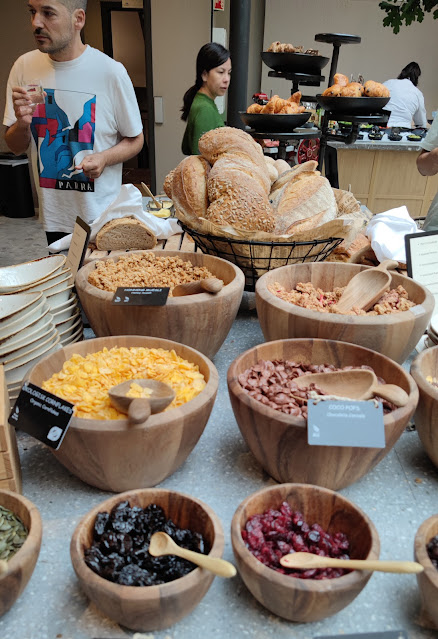












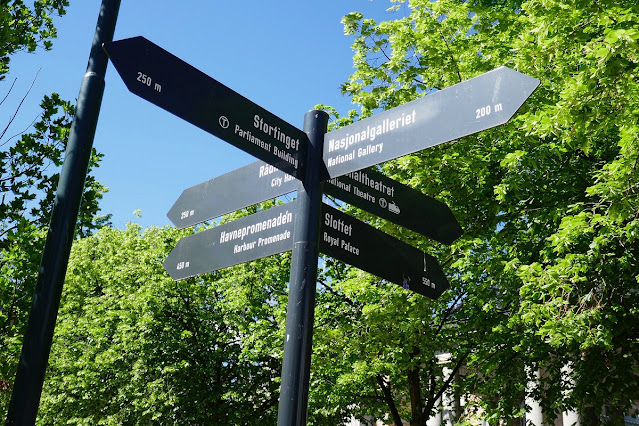









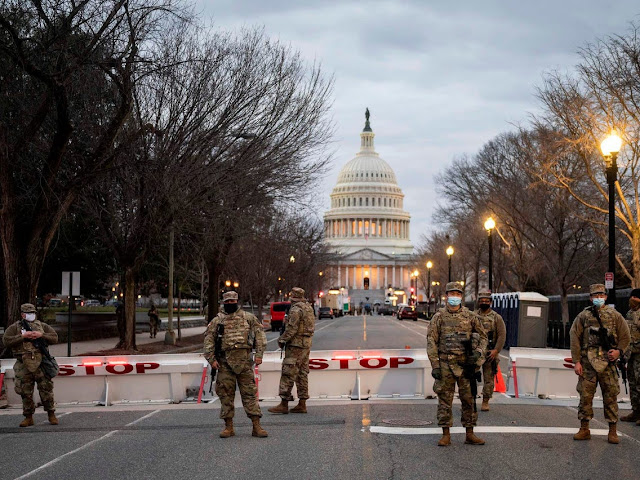





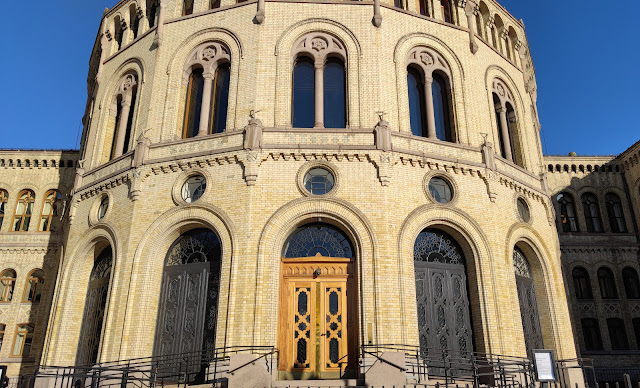


















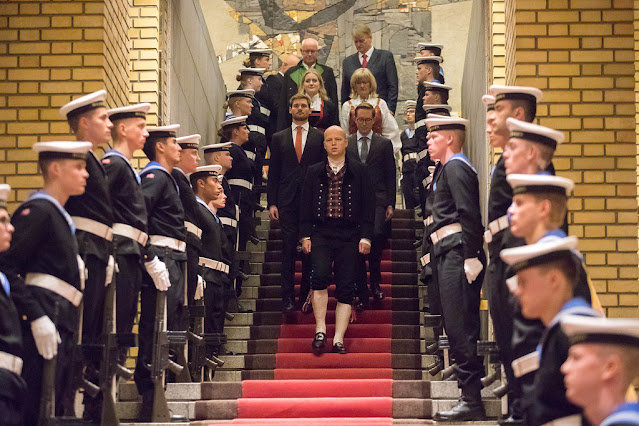





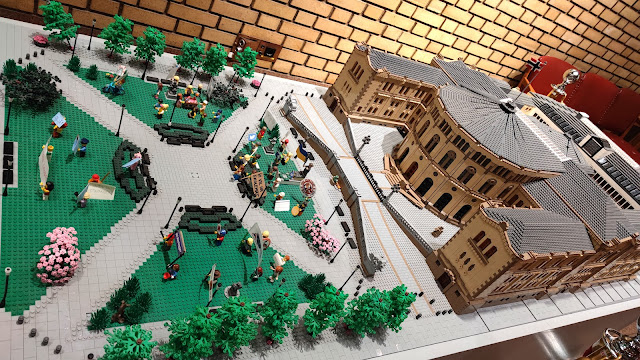












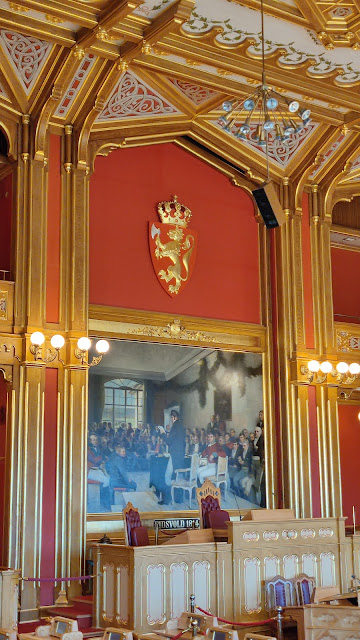

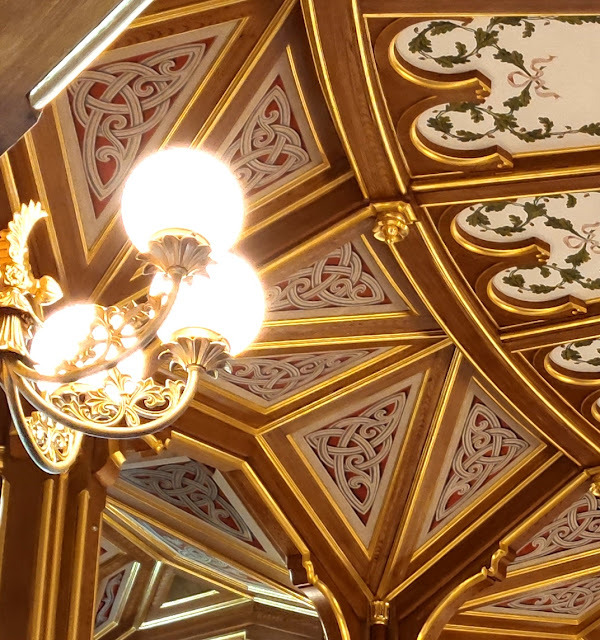
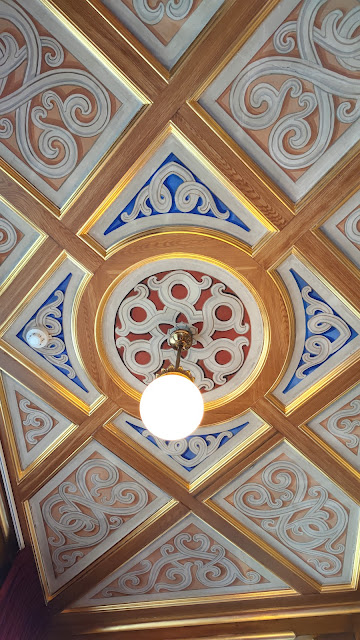





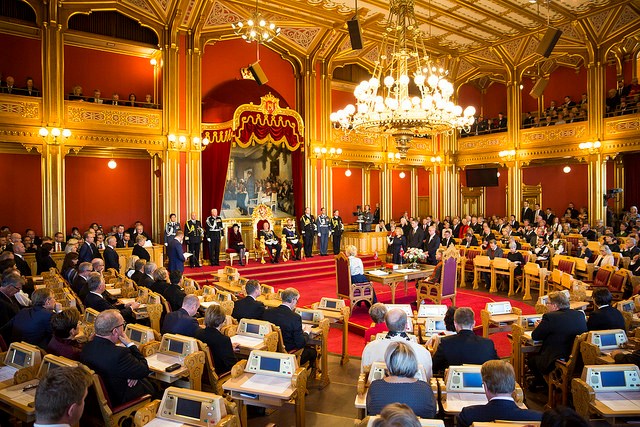



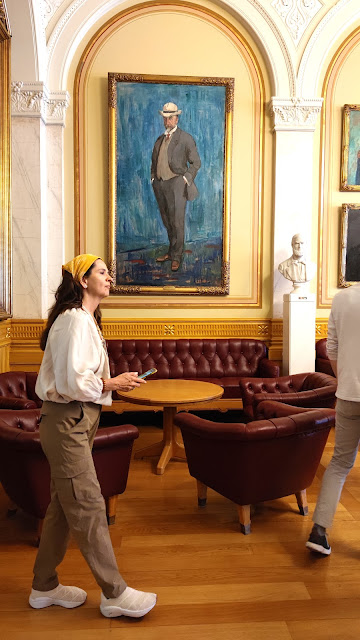



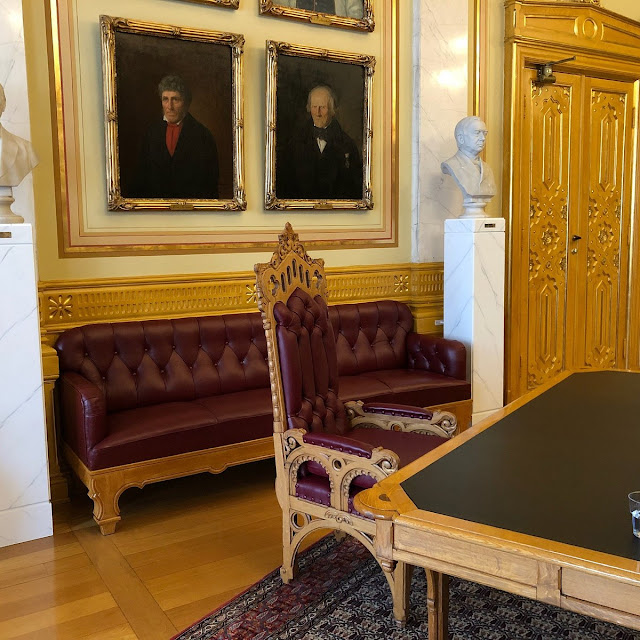















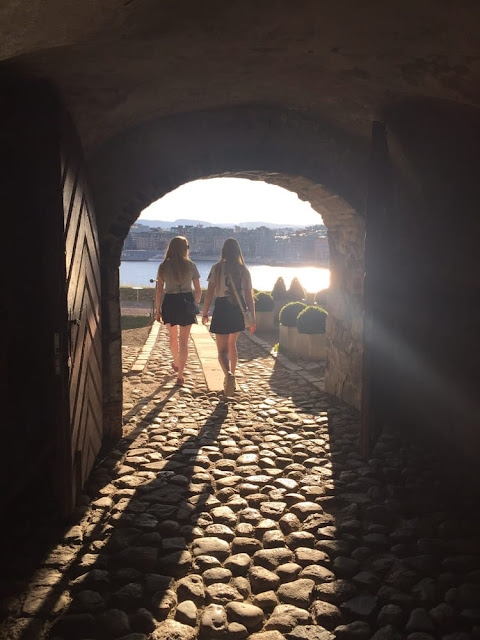







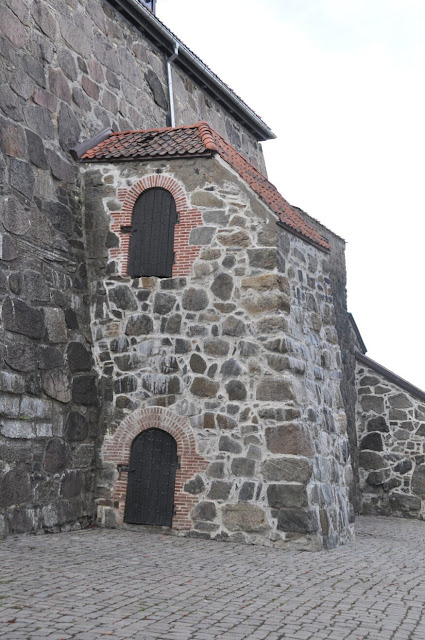









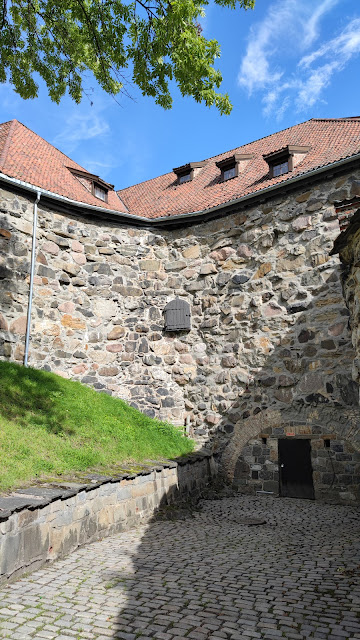















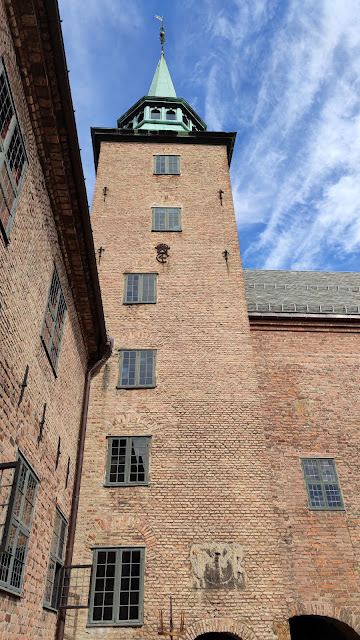









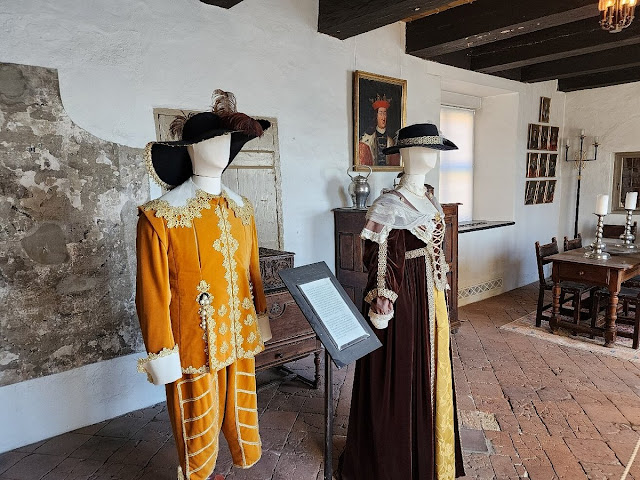
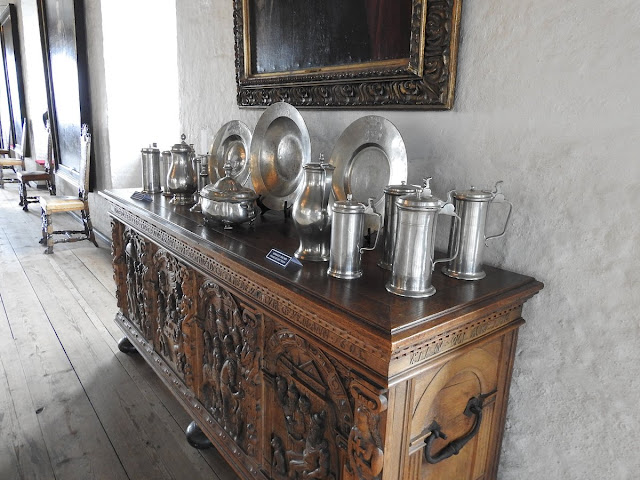















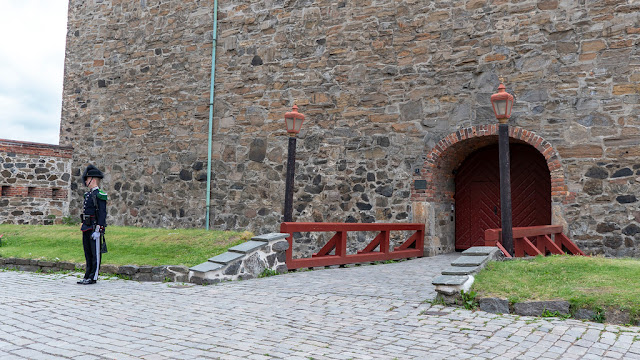




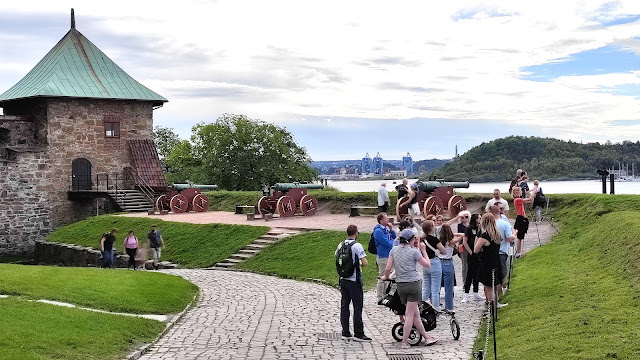















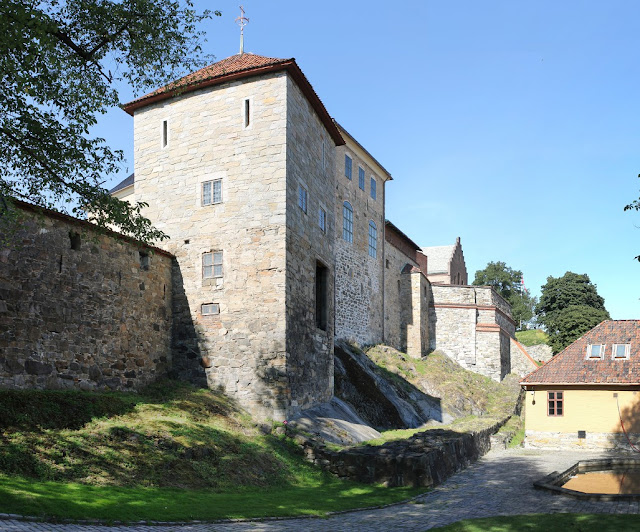








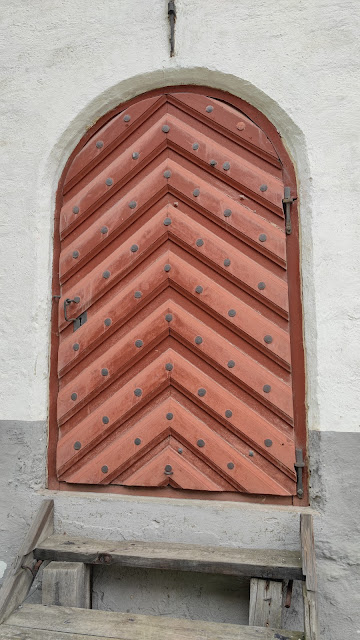





















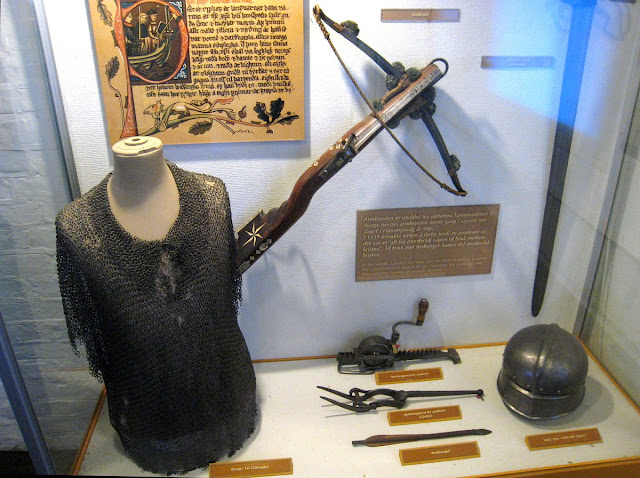


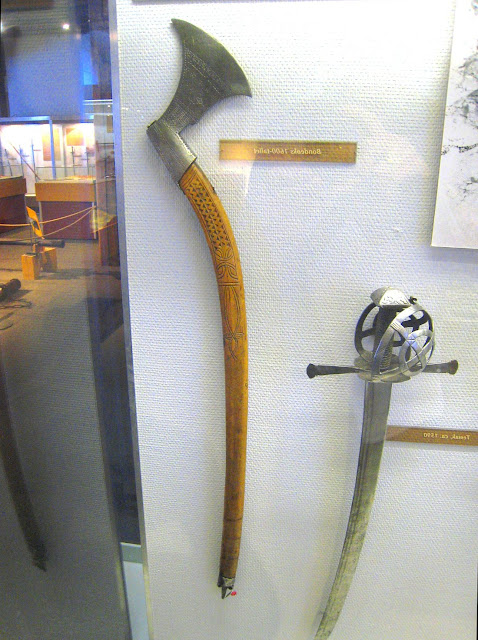









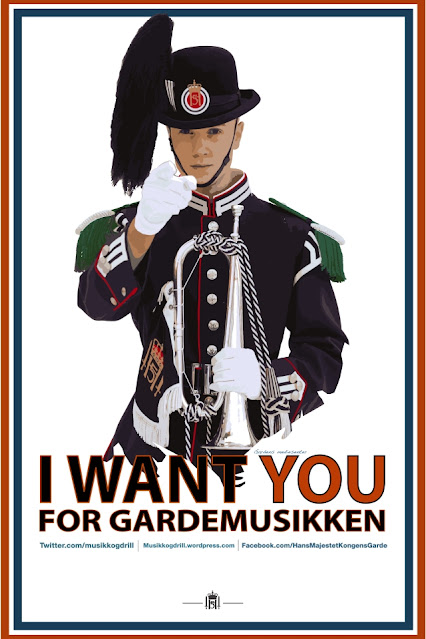
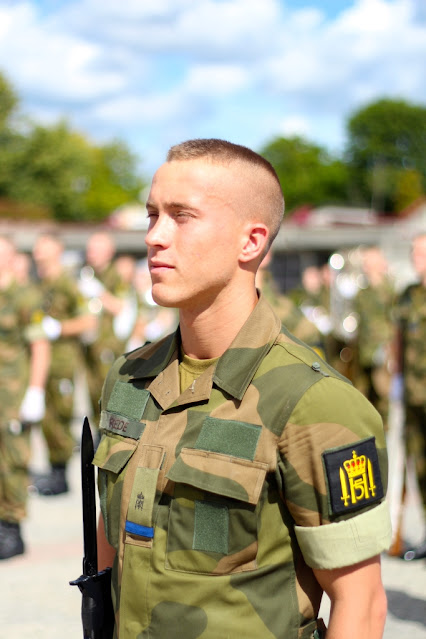





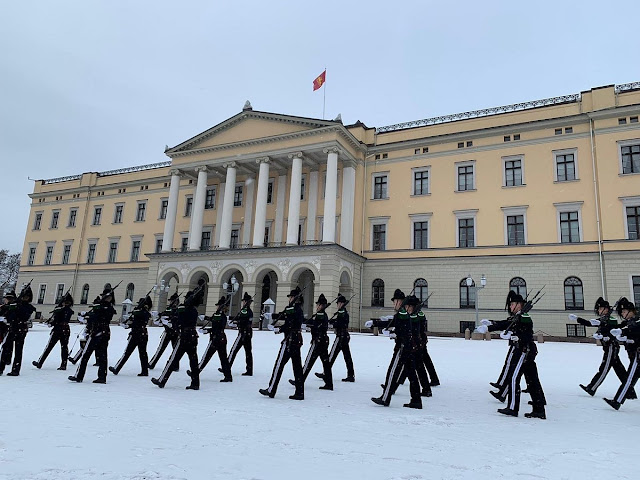




.svg.png)




.jpg)
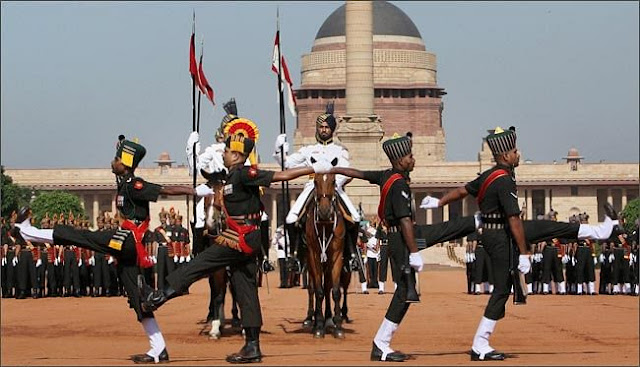

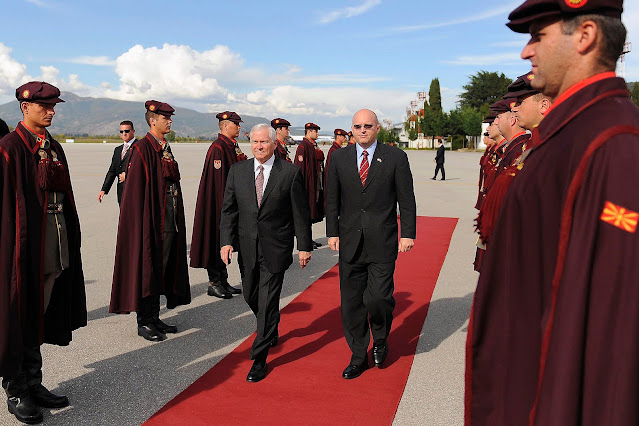


.jpg)

























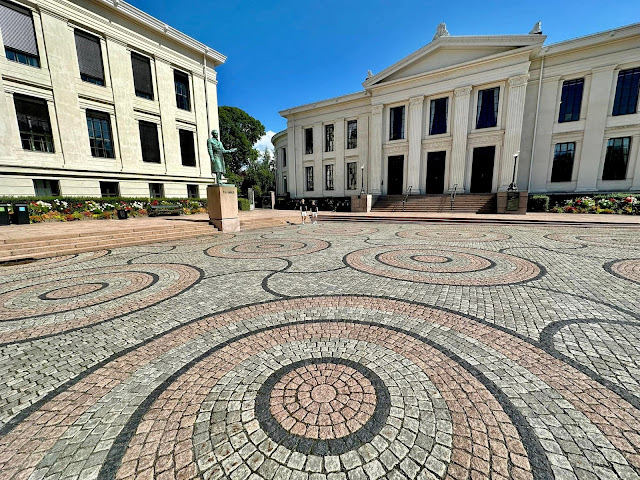













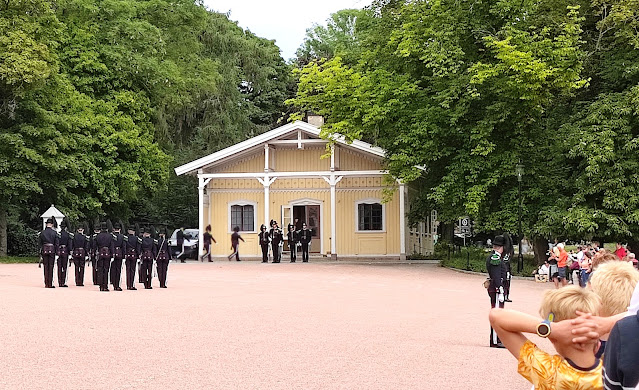




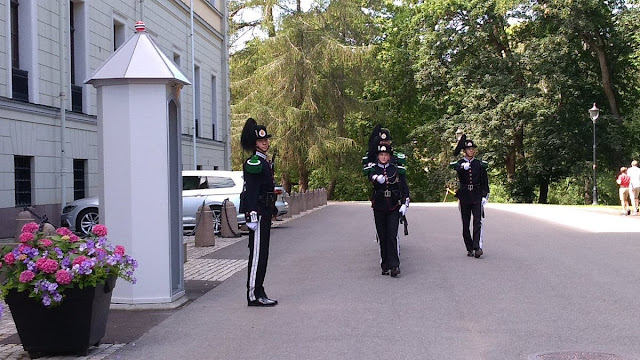







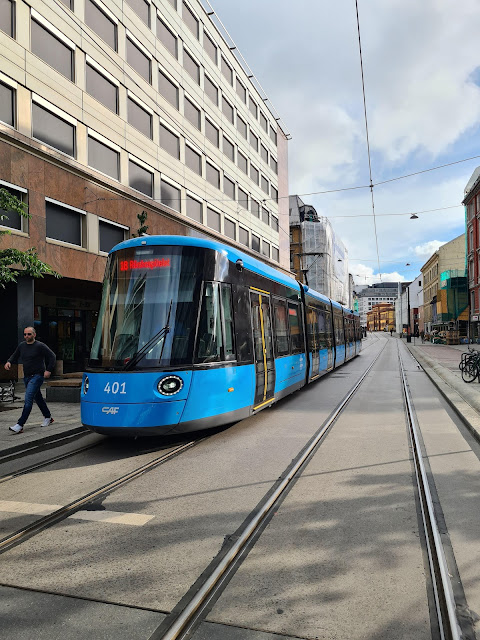








































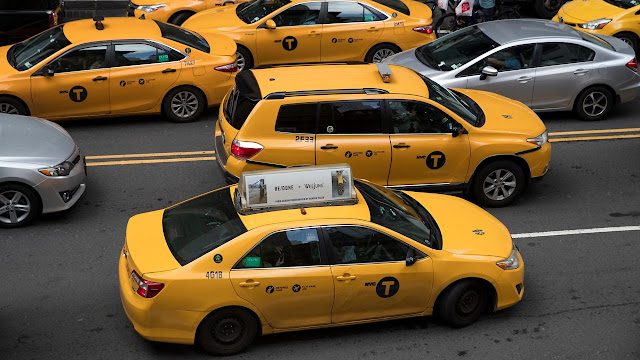























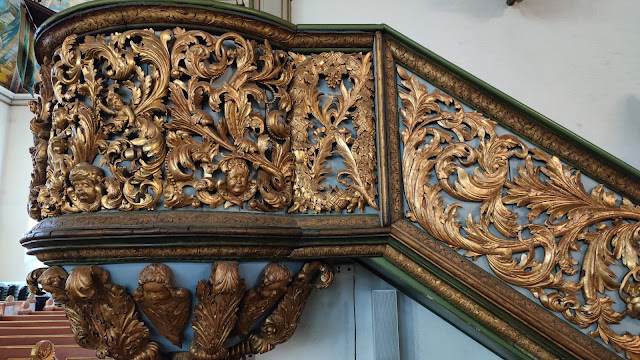

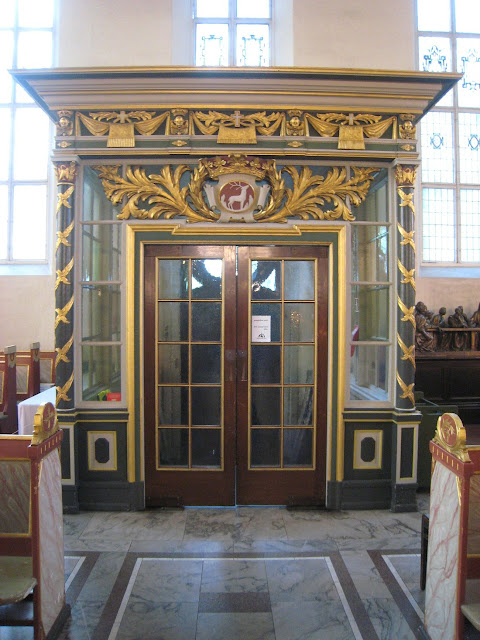















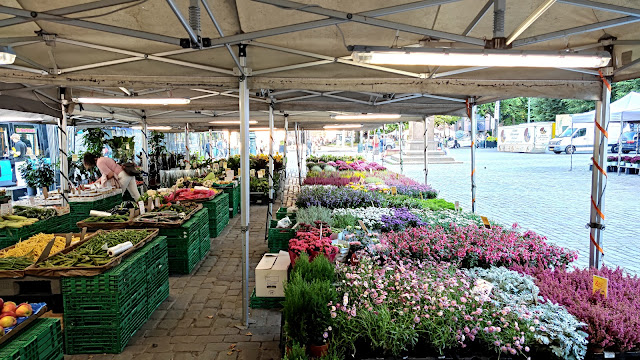








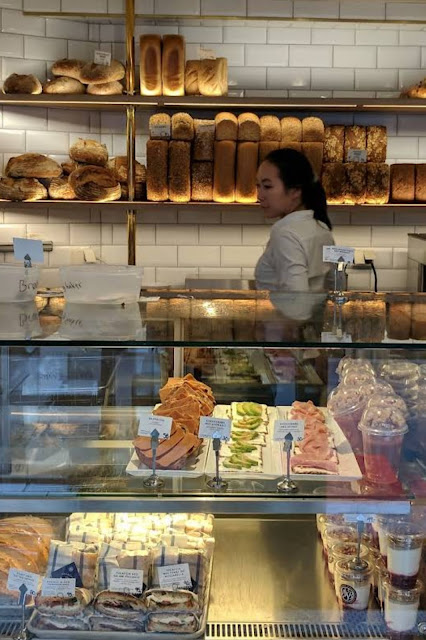






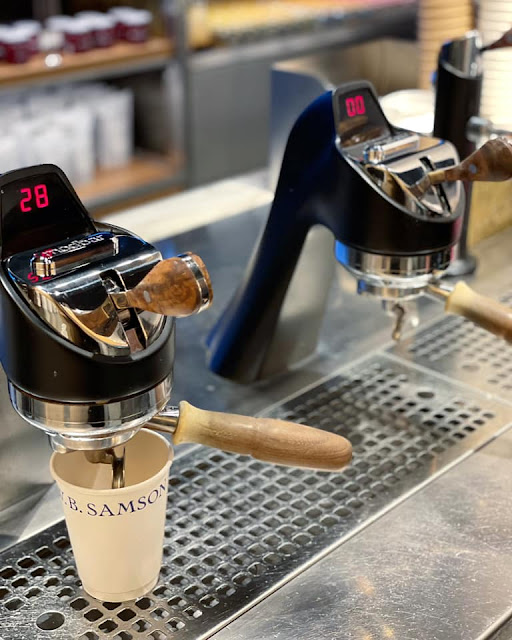

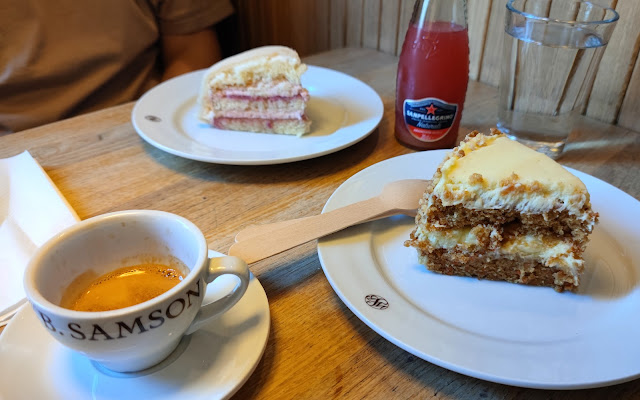








































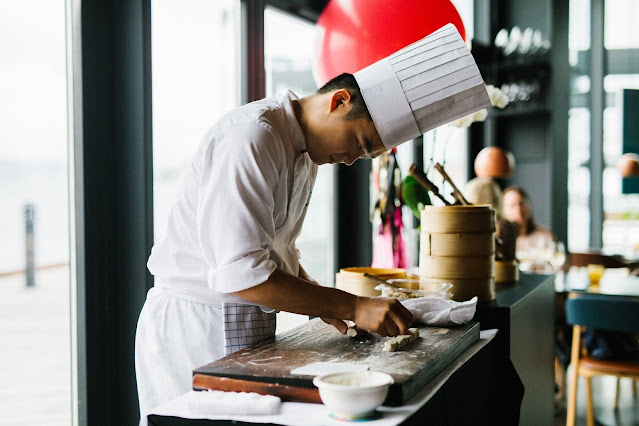






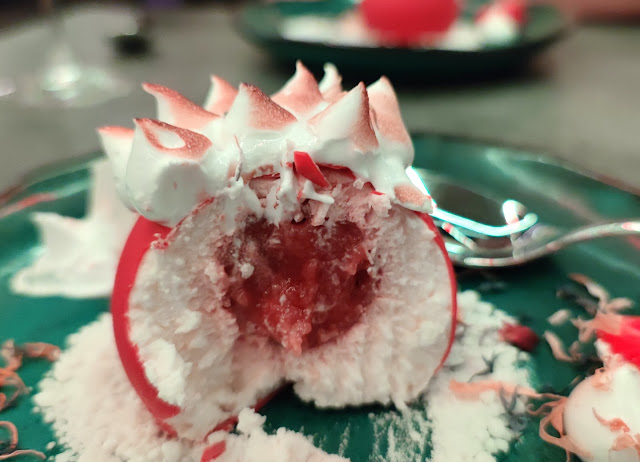




No comments:
Post a Comment
Don't be shy: leave your comments :)